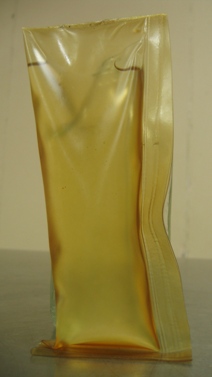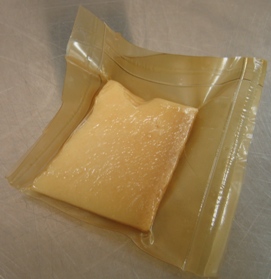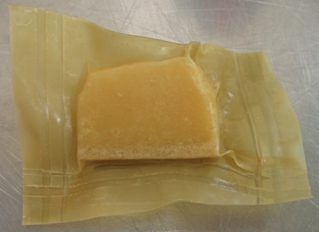 The increase in the presence of plastic in our lives is an unstoppable trend due to the versatility of this material. So innovation in the packaging industry has been focusing on the development of new, more sustainable, economically viable materials with enhanced properties and which also perform the functions required by this sector: to contain, protect and preserve the product, to inform the consumer about it and to facilitate the distribution of it. Traditional containers protect the product and, what is more, are cheap and durable. However, their durability poses a serious problem for the environment, so work is being done to develop sustainable materials that are in line with the trends observed among manufacturers and consumers.
The increase in the presence of plastic in our lives is an unstoppable trend due to the versatility of this material. So innovation in the packaging industry has been focusing on the development of new, more sustainable, economically viable materials with enhanced properties and which also perform the functions required by this sector: to contain, protect and preserve the product, to inform the consumer about it and to facilitate the distribution of it. Traditional containers protect the product and, what is more, are cheap and durable. However, their durability poses a serious problem for the environment, so work is being done to develop sustainable materials that are in line with the trends observed among manufacturers and consumers.
“Today’s society with new consumption habits needs new designs that adapt to its needs. The pace of life reduces the frequency of going shopping, which means that containers need to preserve the product for a longer period of time. What is more, there is a need to take into consideration the concern of packaging manufacturers and packagers to address the new trends in production and logistics systems and offer fresh solutions at a competitive price. It will be possible to achieve this aim if the development of new containers is adapted to the technology currently being used and if the design is optimized to cut the amount of material used,” explained Pedro Guerrero, researcher in Renewable Materials Engineering at the Polytechnic University School of the UPV/EHU-University of the Basque Country.
One of the environmental strategies that is being implemented is the use of materials obtained by using raw materials coming from renewable sources which, once their life cycle is over, have the capacity to biodegrade. “Right now, these materials only account for 1% of world production, according to data from European Bioplastics, but in the short term this market share is expected to grow and could see a fourfold increase by 2017. Specifically, world production of bioplastics in 2013 was 1.6 million tonnes and is expected to reach 6.2 million tonnes by 2017, according to the Institute for Bioplastics and Biocomposites. Within this line of research the BIOMAT group is running various projects with applications in food packaging and in other sectors like pharmaceuticals, electronics or transport.”
The bioplastics industry is a dynamic, constantly growing sector, which has enabled the selling price of these materials to be cut, and in the near future their price is expected to be comparable with those of conventional plastics. This aspect has made it possible to gear the applied research in the food packaging sector towards the development of containers based on biodegradable and/or renewable materials. One of the lines of research of the UPV/EHU’s BIOMAT group is to prepare renewable, biodegradable polymer blends so as to improve the properties of the materials and cut their costs.

So this research group has developed a new biodegradable/compostable container for both liquid and solid oily products; agro-industrial by-products have been used and this will contribute towards the sustainable consumption of raw materials and the upgrading of by-products. The container is transparent and, at the same time, provides an excellent barrier for keeping out ultraviolet light and gases like oxygen. Multilayer laminates are generally used as a barrier against gases, yet the product developed by the BIOMAT group has a single layer, which cuts its cost considerably. Furthermore, it can be thermally sealed and is printable.
This new container, which acts as a barrier between the food and the outside, moves from being a mere container (passive packaging systems) to performing an active role in the maintenance and even improvement of the quality of the food. The main function of this container is to prolong the useful life of the packaged food through the control of permeation phenomena, either through the use of barrier materials or through the retaining of harmful substances and/or the incorporating of beneficial substances for the packaged food. “In the specific case of the deterioration of the food owing to oxidation reactions,” added Prof Guerrero, “you have to bear in mind that this is a reaction started by free radicals that progresses very rapidly, and this makes it difficult to control.

To delay or inhibit this reaction, it is possible to use various strategies that act directly on the oxygen or on the species capable of reacting with it. In the first case, it is possible to prevent gas entering from the outside by means of barrier materials; in the second case, it is possible to resort to the adding of antioxidants, either inside the container on in the container itself. The demand by consumers for products that do not contain synthetic chemical compounds has led to a growing interest displayed by the food industry in the development of active containers with natural additives.”
The BIOMAT group has manufactured an active container with natural antioxidant agents for full-fat, fat or semi-fat cheeses, and cheese portions. The packaging makes the product last longer in a good condition, which plays an important role not only in the quality of the product but also in reducing discarded, uneaten food.
Bibliographical reference
T. Garrido, A. Etxabide, I. Leceta, S. Cabezudo, K. de la Caba, P. Guerrero. (2014). Valorization of soya by-products for sustainable packaging. Journal of Cleaner Production, 64, 228-233.
Source
University of the Basque Country, press release, 2014-10-30.
Supplier
BIOMAT group (UPV/EHU)
European Bioplastics e.V.
University of the Basque Country
Share
Renewable Carbon News – Daily Newsletter
Subscribe to our daily email newsletter – the world's leading newsletter on renewable materials and chemicals













